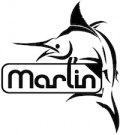Results 11 to 16 of 16
-
09-09-2015, 10:26 AM #11
This might not be drive belt related. It might just be the extruder motor doing steps and you are seeing it the print. You could over extrude by a small amount and see what happens. I would expect the frequency of the ripples to increase, but for them to be harder to see because they will 'smear' together if this is the case.
-
11-17-2015, 01:00 PM #12Student

- Join Date
- May 2015
- Posts
- 49
I thought I could just live with this, figuring that it was just what 3D printers do. But the more other printers I see, the more I know that not to be true. And it should be fixable.
Here is more information on the mechanics and geometry of my printer:
X and Y axises are configured identical. Motors are 200 steps/Rev. Driver configured for 16 microsteps/motor step. (3200 microsteps/rev). 18 tooth gear with a 2mm belt pitch. So for Marlin, I have both X and Y set to (200 * 16) / (18 * 2) -> 88.8888
I measured the repeat of the pattern more accurately. It is 83 ridges over 60 mm, so .723 mm/ridge.
I idea that it might be extruder related didn't really occur to me. But now thinking about it, I would have thought that the PLA would be too "wet" at the point of contact to be effected at all by tiny steps of the extruder motor. And with the ridges to precisely lined up from layer to layer, I still keep thinking it has to do with X and Y motion. If it was related to the extruder, then I'd think that there would be no reason why the ridges would line up vertically along straight walls in X and Y.
I don't think it's a resonance problem - although the parameters of the X and Y motion are the same, the mechanics are completely different, and the pattern is the same for both X and Y walls.
Another clue! If the vertical wall is 45 degrees off the X and Y axises, the spacing of the ridges expands accordingly!
Still scratching my head.
-
11-17-2015, 02:10 PM #13
I'd like to see the gcode file for a print that does this. If you post it to 3dprintboard, change the filename extension to txt so the system accepts it.
-
11-17-2015, 03:37 PM #14Student

- Join Date
- May 2015
- Posts
- 49
Attached is the G-Code for a small PIR sensor case about 50mm square by about 40mm tall. I've printed a few of these and all of them exhibit the same problem.
The Gcode file is much to big to attach (1.8M), so I split off the beginning (the first few layers have holes and are basically solid, so too much Gcode to send) and the ending very top few layers which are essentially the 4 vertical walls about 50mm long and a couple of mm thick. It might be the second file that is most useful. THanks.Last edited by iras; 11-17-2015 at 03:43 PM.
-
11-17-2015, 04:24 PM #15
The files are too small for what I wanted to look at, but here's what I was thinking. I've seen cases where a repetitive vertical pattern on the outside is caused by infill. What I wanted to do is upload the gcode file to the online viewer at gcode.ws and scroll up and down through the print layers, observing where the print head should be moving in straight lines and where it is zig zagging around for any infill. Try viewing the full file in gcode.ws yourself. The slider on the right side will move you up and down the print layers. The slider on the bottom can be used to view the nozzle movement for the selected layer. If gcode.ws shows the print head only moving in straight lines for the vertical walls on your print, you at least know the issue is something in your printer, not a slicing artifact. If gcode.ws shows an infill pattern in the walls, gcode.ws might indicate whether the infill pattern is at about the interval you're seeing. If so, try changing the infill percentage and see if the repetition interval on your print changes.
It's been forever since I've worked with slic3r. The settings summary at the end of the 2nd file probably answers the question, but how many perimeters are you printing? You might try printing with another one. Or try printing the external perimeters first. I think you're currently printing them after infill, which could help cause any infill pattern to show through.Last edited by printbus; 11-17-2015 at 04:34 PM.
-
11-18-2015, 09:26 AM #16Student

- Join Date
- May 2015
- Posts
- 49
Good suggestion ..... but I don't think it's infill related. It prints 3 border along all edges before going inside to do the infill. And given the thickness (thin-ness) of the walls (6 side-by-side extrusions) that there's no infill in that area. I've been watching to see.
It sure seems like it almost has to be the stepping interval, but the math doesn't add up.






 Reply With Quote
Reply With Quote




QIDI Slicer "Plater" is...
04-12-2024, 02:21 AM in QiDi 3D Printer Forum